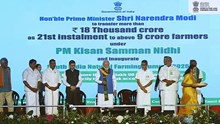
Bao rice, scientifically classified under Oryza sativa, is a deep water rice variety primarily grown in waterlogged areas unsuitable for conventional rice cultivation. Unlike regular paddy, which is typically grown under controlled irrigation or in shallow water, bao rice thrives in natural floodplains where water depths range from 50 cm to over 1 meter. This form of rice cultivation has evolved in response to specific agro-climatic zones and presents a resilient solution to farmers in flood-prone regions such as Assam and parts of eastern India.
Its long growth cycle, tolerance to submergence, and adaptability make it an indispensable crop in certain ecological niches.
Land Selection for Bao Rice Cultivation
The choice of land is crucial in bao rice farming. It is typically grown in low-lying regions that experience prolonged water submergence, making them unsuitable for regular rice varieties. These areas are broadly categorized into:
-
Deep Water Areas – Water level up to 1 meter
-
Very Deep Water Areas – Water level beyond 1 meter
Such conditions allow bao rice to fully exploit its elongation ability and thrive in otherwise challenging environments.
Land Preparation Techniques
Land preparation begins with the burning of stubble from the previous season to reduce nematode and pest infestations. This is followed by thorough ploughing, including cross ploughing, to ensure soil is well-aerated and leveled for uniform sowing. These practices are essential to create a conducive bed for seed germination and root establishment.
Seed Selection and Treatment Methods
Seed quality significantly influences germination and crop health. Seeds are first selected by floating them in plain water to separate viable seeds from damaged or hollow ones.
Two seed treatment methods are commonly used:
1. Wet Method:
Selected seeds are soaked in fungicidal suspensions for 24 hours. Recommended fungicides include:
-
Mancozeb @ 2.5 g/kg
-
Captan @ 2.5 g/kg
-
Carbendazim @ 2.5 g/kg
Each kilogram of seed requires one liter of solution. The cost of treating seeds for one hectare ranges from ₹57 to ₹94, depending on the fungicide used.
2. Dry Method:
Seeds are mixed with fungicide powders in a sealed container and agitated for about five minutes. This dry application is useful when water-based soaking is not feasible.
Optimal Sowing Time and Methods
Sowing of bao rice typically takes place between March and April. There are two distinct approaches to sowing:
-
Ahu + Bao Mixture (Ahu Areas): A mix of 8 kg ahu and 2 kg bao seeds per bigha is sown to hedge against climatic uncertainties.
-
Monocrop Bao (Bao Areas): In deep water zones, bao is grown exclusively.
In both systems, a uniform seed rate of 75 kg/ha is maintained for optimal plant density.
Fertilizer Application
Fertilization plays a critical role in ensuring a healthy crop. Bao rice fields are best nourished with neem-coated urea at 30 kg N/ha, split into two equal doses—one as basal and the other at the maximum tillering stage.
To prepare neem-coated urea, mix 50 kg of urea with 500 ml of neem oil on a polythene sheet until a uniform yellow color appears. Alternatively, a 4% foliar spray of urea can be applied at 150 days after sowing (DAS).
Crop Management and Interventions
Effective field management includes:
-
Regular weeding, especially the removal of aquatic weeds like water hyacinth.
-
Use of “bindha” or rake wherever feasible to maintain soil aeration.
-
In mixture systems, pruning of bao at the time of ahu harvest to reduce competition.
These practices help ensure healthy tillering and better resource utilization.
Bao rice cultivation offers a sustainable and viable alternative for farming in flood-prone and low-lying regions. With a strong portfolio of native and improved varieties, site-specific crop management strategies, and effective pest control measures, bao rice helps marginal farmers convert adverse conditions into productive opportunities. As climate variability increases and flood risks rise, bao rice stands out as a resilient ally in ensuring food security in vulnerable geographies.
















